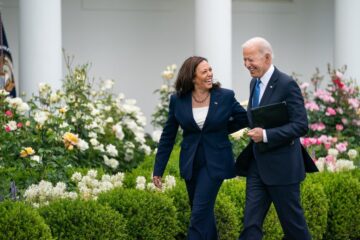Welcome back to Week 10 in my weekly reports analyzing the Covid-19 pandemic and its effects on the country, higher education and study abroad (we’re in the double digits!). For those of you reading this on my blog, Off the Silk Road, I have also launched a newsletter, where these reports can be sent directly to your email each week. Click here to subscribe. Welcome to all the new subscribers!
Last week, I revisited the idea of the “patchwork pandemic” as the virus continues to spread across the nation, the potential effects of the protests on viral transmission, as well as examined models and considerations for colleges to reopen in the fall. This week, we will begin to draw conclusions on the state of higher education for the fall and analyze these models in the context of greater national trends. Once again, this week’s report will focus on three major topics: a national view, higher education and study abroad/international education.
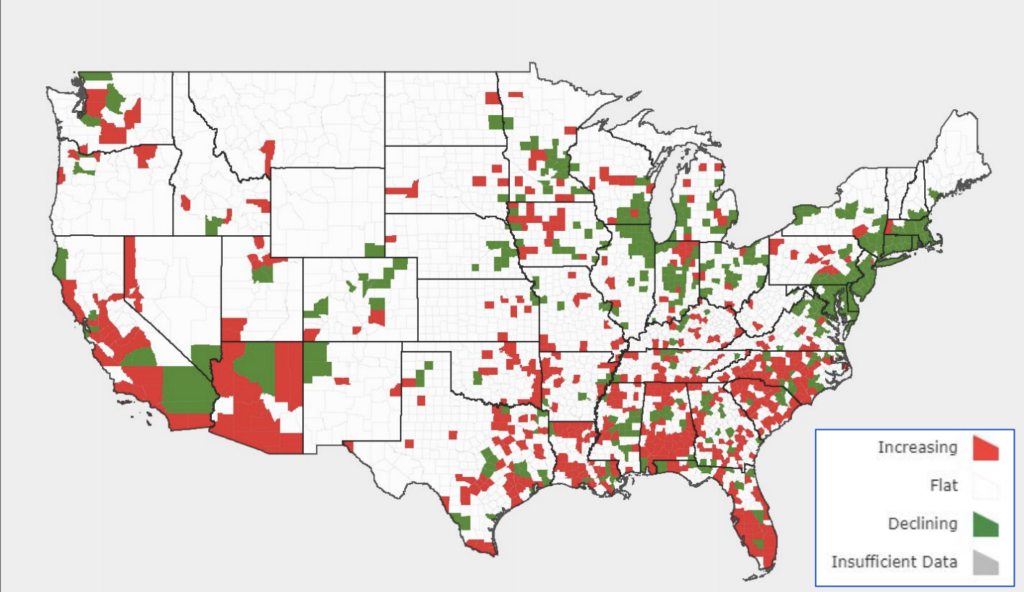
There’s a lot of material to go through (as per usual), so let’s get straight to it.
A national look
I would first like to dedicate this report to New York Governor Andrew Cuomo. For 111 consecutive days, he has led his state through its coronavirus outbreak, showing empathy, compassion and intelligent leadership as New York experienced one of its worst crises in modern history. His last briefing is well worth the watch, as well a viewing of these photos of his entire coronavirus response across the state. We are New York Tough.
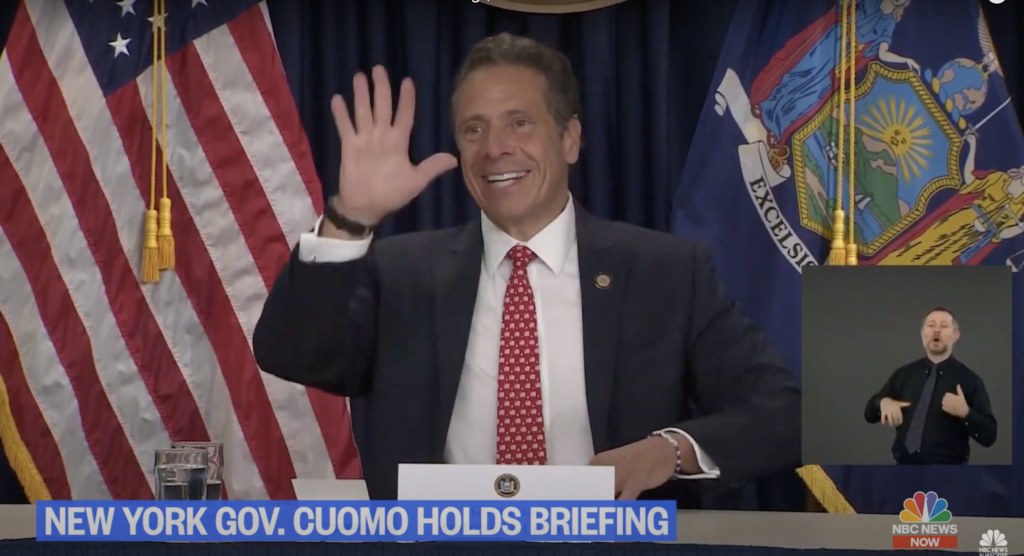
As America continues to experience the pandemic in varying degrees of severity, let’s examine some of the states that have reopened in an effective manner, and others that remain more vulnerable. Slow and smart reopenings were the key. Those who did it too quickly failed.
Why has New York been so successful in recovering its economy while keeping case counts on the decline for 60 days? I attribute this to a number of reasons:
- Centralizing hospital administration and supply tracking
- Public campaign and buy-in, with an understanding of the disease’s severity
- Clear communication by officials and health experts
- Testing, testing, testing (New York conducted 70,000 tests on Thursday)
- Targeted access to underserved communities
- Phased reopening
- Science and data, not feelings and politics
Let’s also examine Vermont, who shares some of the same characteristics as New York in terms of its pandemic success. Now, yes, Vermont’s population density is much less than that of New York. However, clear communication (turning the spigot slowly), early response and public behavioral changes all worked to Vermont’s favor. Look at this comparison between Vermont and Arizona, for example.
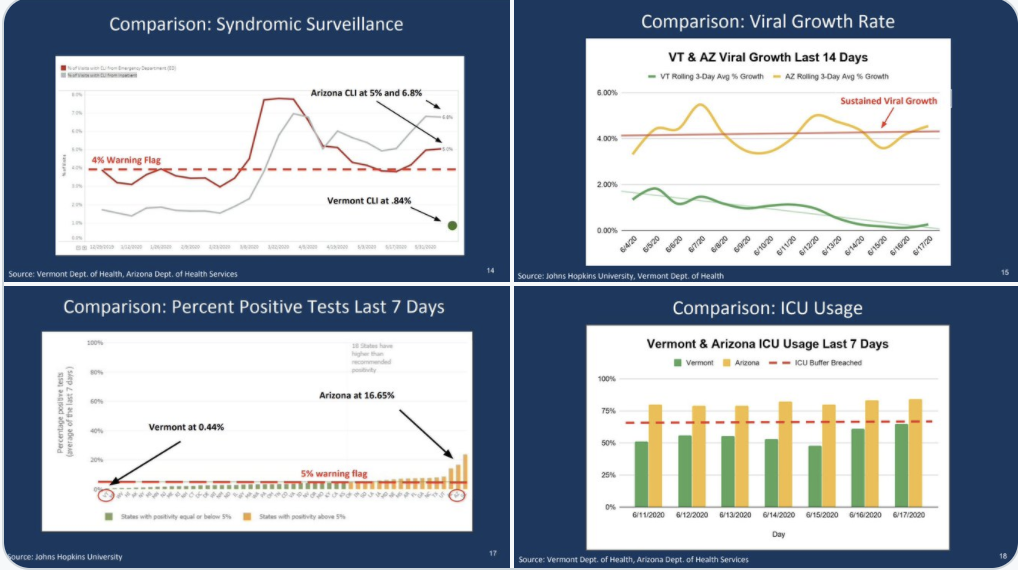
While our attitudes to the virus have changed, the virus has certainly not. The coronavirus has not gone on a summer vacation. Over two jumbo jets’ worth of people still die every day, with 10 states experiencing record numbers in cases. Cases continue to increase in Oklahoma, Arizona, California, Oregon and Florida, among other states. The CDC has now predicted 135,461 deaths by July 11 and the IHME model has raised its projection to 201,129 deaths by October 1. The World Health Organization has warned of a “dangerous phase” as outbreaks widen, and a new study in The Lancet shows that one-fifth of the world’s population is at severe risk due to a multitude of factors. According to former FDA head Dr. Scott Gottlieb, almost 25% of Covid-19 hospitalization in Texas are people in their 20s. In March, the average age of Covid-19 cases in Florida was 65; now that number is 37. States that reopened early are now paying the price. And to that, Cuomo says:
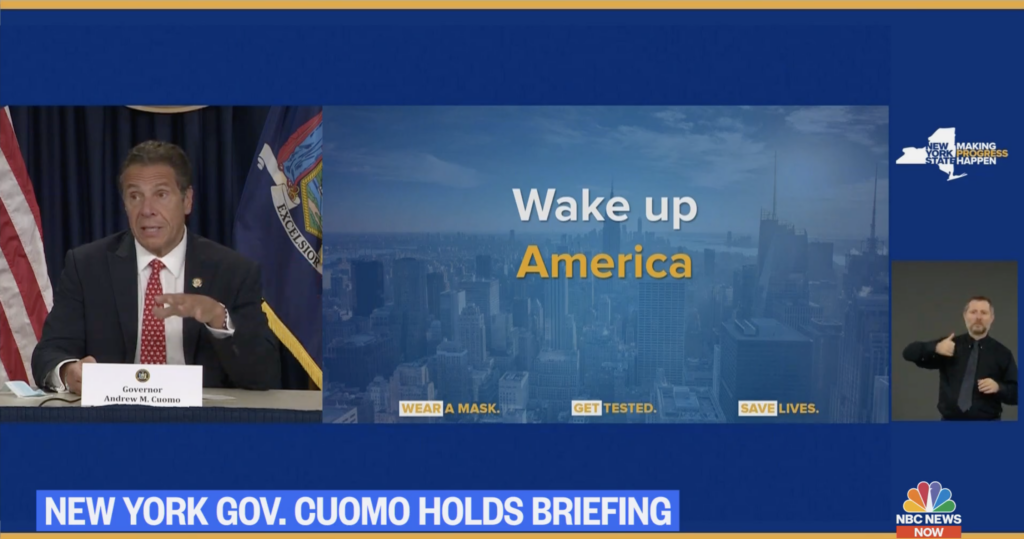
This seagull follows social distancing better than many Americans, and he has a bird brain.
Speaking of “covidiots,” let’s take a brief moment to discuss Trump’s upcoming rally in Tulsa, OK today. Modeling from University of Massachusetts professor Erin Bromage shows that based on current infection prevalence in the area, around 100 people could arrive at the rally currently infected and asymptomatic, passing it onto up to 1,000 newly infected people at the rally. This is incredibly risky. And no amount of Purell will make it better.
As the federal government’s response can be described as one of “denial, mismanagement and polarization,” and President Trump continues to call testing “overrated” and a “double-edged sword,” science and health reporter Donald G. McNeil, Jr. of the New York Times said on “The Daily” that we are complicit in the threat. “Now we know what the danger is and we are still getting an enormous number of infections,” he stated. “1,000 deaths a day? That’s a terrible number.” America faces a difficult decision of whether or not to enforce second lockdowns. According to Dr. Anthony Fauci, this is not necessary at the moment, though he warns of a possible dangerous resurgence in the fall.
It’s important to remember that models are extrapolations based on our behavior. What we do affects them greatly. As seen on this map, when compared to the rest of the world, the United States ranks low on its mask-wearing index.
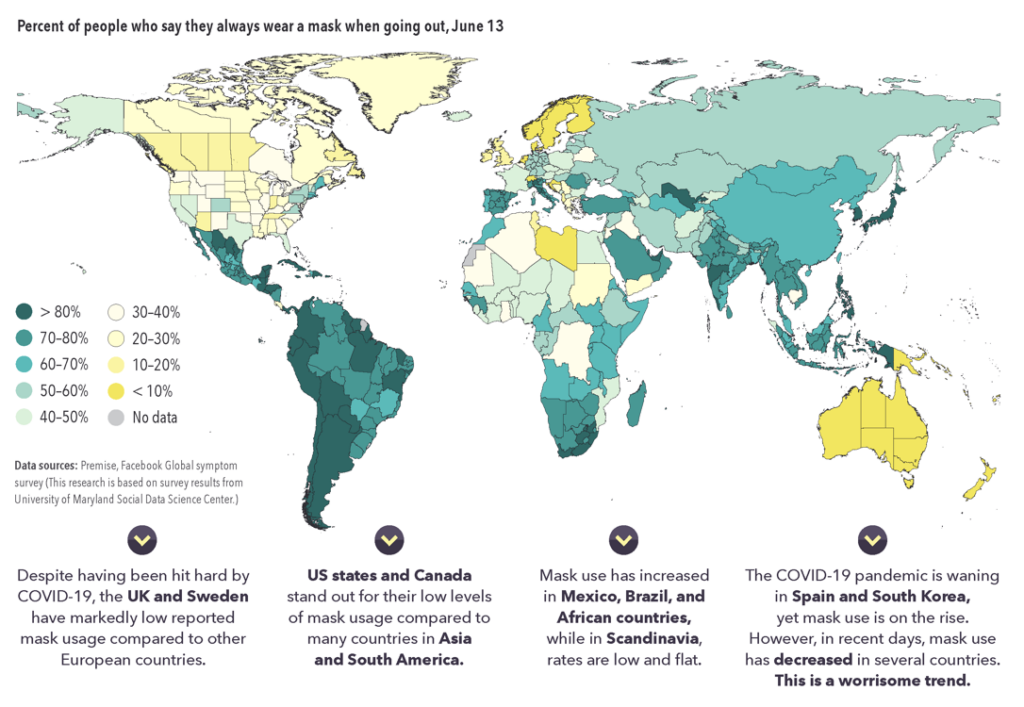
I analyzed earlier in the pandemic that the virus tended to affect counties that lean Democratic. Now, the pandemic has entered Trump country.
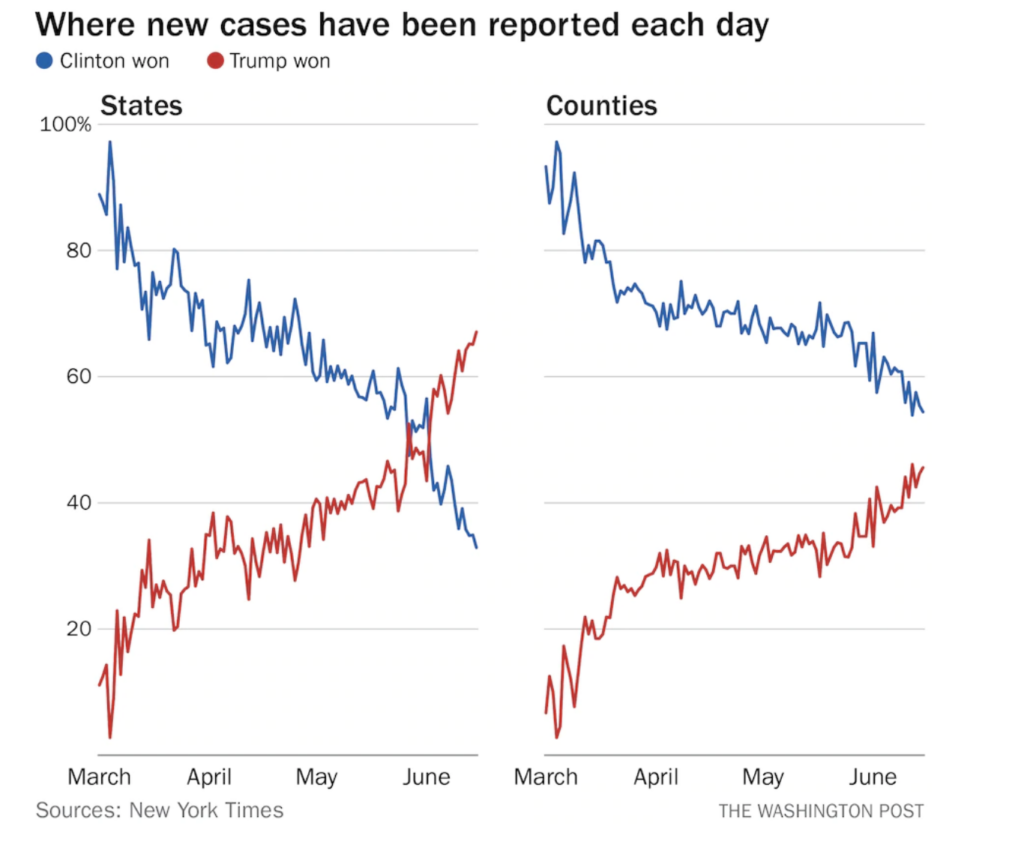
Let’s take a trip across the globe to Beijing, where we discussed the beginnings of a recent outbreak connected to a fresh food market. As of Thursday, newly confirmed cases currently number 158. Schools have been closed throughout the capital and flights have been cancelled. Contact tracing has been conducted. This outbreak has certainly thrown the capital on edge, and should serve as a cautionary tale that the coronavirus will not completely disappear until there is a vaccine.
Now onto testing and tracing. Ideally, we would want to see the number of tests increasing and the number of cases decreasing. In many states, this is not the case. It is important to remember that testing is not a public health intervention; merely it helps guide other public health interventions. Now that testing capacity is becoming more and more available, I would advocate for a nationwide surveillance testing effort. But the federal government doing something? Not happening.
As we go into summer, contact tracing will be key. Vermont is one of just 8 states currently meeting the per capita estimated need for adequate contact tracing, according to NPR. New Zealand has chosen to have residents scan QR codes whenever they enter a site, which I believe is a method that college campuses can use. It is also important to have the ability in society for workers to take two weeks off for possible quarantine.
As usual, we have seen more studies published and new pieces of information now available to help us better understand Covid-19. Let’s take a look at some of the highlights.
- A CDC study from Japan finds that many clusters can be attributed to young people spreading in gyms, restaurants, bars and music events. For 16 clusters, 41% of probable patients were presymptomatic or asymptomatic, which does not bode well for colleges.
- The steroid dexamethasone has been found to reduce death by up to one third in hospitalised patients with severe respiratory complications of Covid-19, improving their chances of survival on a ventilator.
- A physics fluid dynamics analysis shows that flushing a toilet could generate a coronavirus aerosol cloud that could go into the next stall. While we do know that the virus can be found in feces, it is important to remember that this study uses a fluid dynamics approach, and we do not know the viral load necessary to become infected from a toilet, nor have we found any cases that can be traced back to a toilet (though I’ll admit that is hard to find).
- There is a growing consensus that interactions for extended periods of time, not quick encounters or surfaces, are responsible for much of the virus’ transmission.
- Vice President Mike Pence blamed the media for coronavirus fear-mongering.
- Masks work. But Texas doesn’t believe that.
- A CDC study from Atlanta shows that Black patients (46%) were more likely to be hospitalized than white patients (29%).
- Another CDC study shows that patients with underlying health conditions were 12 times as likely to die of Covid-19 as otherwise healthy people.
- A small Stanford study finds that self-swabbing tests for the virus are accurate and safe.
- The time someone who is tested can affect their result, due to varying amounts of viral load. Many experts are encouraging people to get tested around three to six days after they think they may have been exposed.
- A study of over 900 U.S. metropolitan counties suggests that the city’s size matters more than density in terms of viral spread.
- A study found that children and teenagers are only half as likely to get infected with the coronavirus as adults aged 20 and older, and they usually don’t develop clinical symptoms of Covid-19. This study did not use data from the U.S. and notes that they could still contribute to spread.
- The first in-depth, dedicated, immunologic profile of people who had the virus but never developed symptoms—the true asymptomatics, in a small study, found that they had prolonged viral shedding compared to those who were symptomatic.
- Dr. Fauci cautioned against the MLB playing too deep into the fall and said that football season may not happen unless players and staff are placed in a bubble, as he also warned against an “anti-science bias” in the U.S. Trump was not happy.
- A study found that those with the virus were at least as infectious before they developed symptoms as during their actual illness and that people aged 60+ years were most susceptible to household infection.
- 16 friends went out to a bar in Florida and all contracted the coronavirus.
- After reopening schools, Israel has 627 students and faculty infected, 168 schools closed, and 21,807 students and staff in isolation.
- Remember the basketball game in Vermont we discussed last week? It was confirmed by the state’s health department as a superspreader event.
- A new study found that antibodies — protective proteins made in response to an infection — may last only two to three months, especially in people who never showed symptoms while they were infected. However, this does not necessarily mean that people can be infected a second time, according to The New York Times.
It is still too early to fully understand the impact of the protest on the virus’ spread, but early data show no upticks in many places. If we get to the end of June without any changes, I’ll feel better.
As this Onion article captures the sentiment felt by much of America, we now face a delicate balance: do we now just accept the huge numbers of cases and only do something if the hospitals become overwhelmed? In this approach where we have given up compared to other nations, it seems that this is the case.
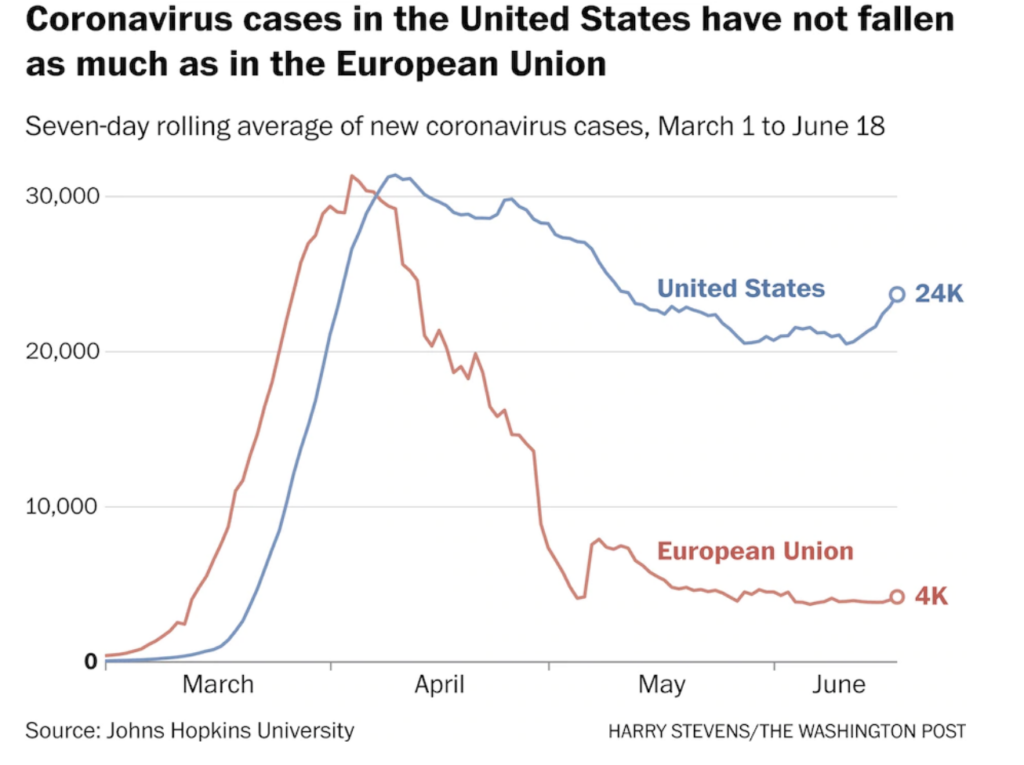
Finally, please enjoy this picture of large teddy bears at a café in Paris as a way to enforce social distancing.
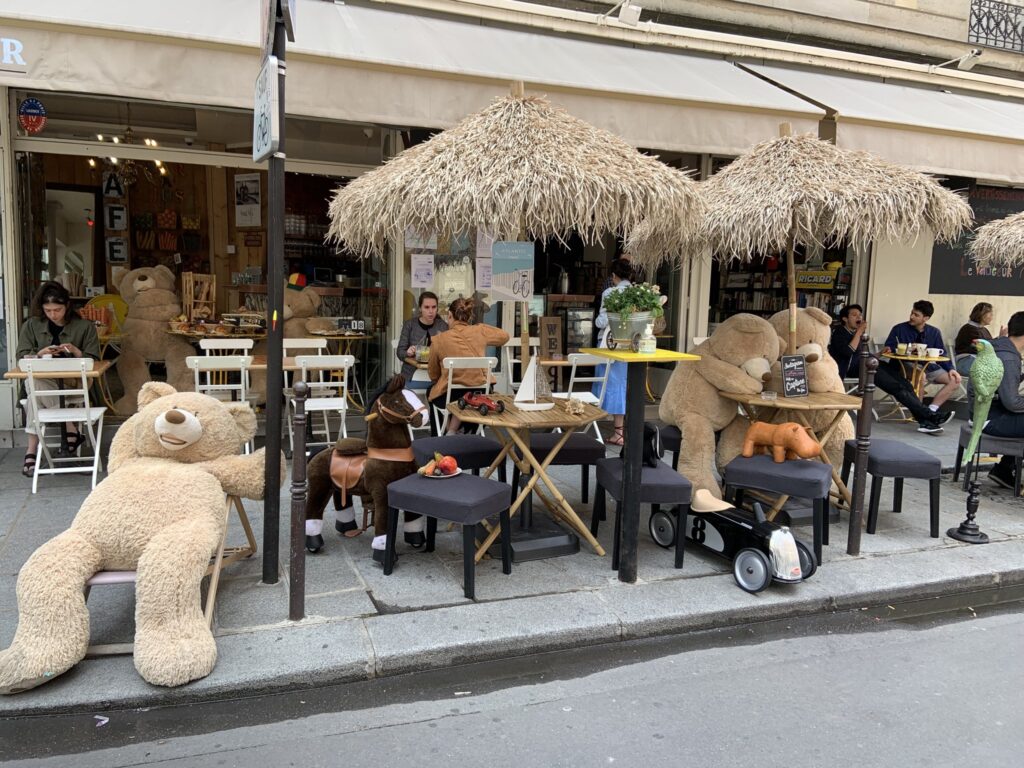
Having laid down the groundwork on the national scene, let’s take a look at the latest developments in higher ed.
Higher education
First of all, DACA lives. Home is here for 643,000 DACA recipients, many of whom are on the frontlines of fighting the pandemic.
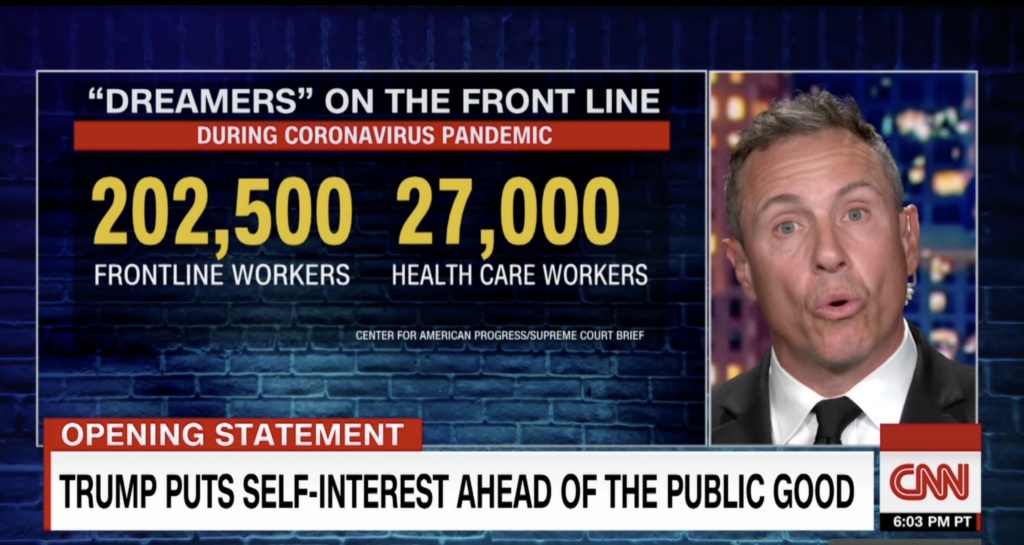
As we approach the end of June, more and more colleges are announcing their fall plans, and many signs point to reopening. I bounce back and forth each day as to whether this is the right public health, economic and educational decision. Rather than start with my thoughts, let’s take a look at what we’ve learned this week and analyze the facts and data.
Reopening is a calculated risk, influenced by political and economic pressures. For colleges, it is a question of whether the non-pharmaceutical interventions (masks, social distancing, de-densifying) can lessen this risk. On June 12, OpenSmartEDU, in collaboration with Tuscany Strategy Consulting, Council for Higher Education Accreditation, and Johns Hopkins University, published a toolkit for higher-education leaders making plans for the fall. My colleagues at the CC Covid-19 Reporting Project break these questions down for you, which I find incredibly useful.
But yet, we are always left with more questions, unclear statements (as my colleague Grace Ferguson at Boston University points out) and potential legal issues. Colleges are going to have to anticipate spikes in infections. What is interesting to me is that colleges in states with increasing outbreaks have not changed their reopening plans too much based on their state’s trajectory, possibly due to political pressures (some schools in Georgia are not requiring masks). I will continue to investigate these trends.
As much as we would like to think of college campuses as bubbles, it would be foolish to do so. “Masks and a lot of hand sanitizer,” even face shields, are simply just not going to cut it. Local businesses rely on college customers, though many local residents may be concerned about the impending threat of infection. There is a tension that exists between the economic benefits and the viral drawbacks that college students bring to a community. K-12 schools also are part of the equation, as many faculty need schools to be open to lessen the burden on childcare. 94% of school district superintendents, representing the country’s 13,000 school districts, say they aren’t ready to announce when they’ll reopen or resume in-person instruction, according to a survey by the School Superintendents Association. Schools that go remote for the fall may have to provide some sort of assurance that they would be in-person for the spring semester. State governments are beginning to release guidelines for institutions in their state, as the University of Texas adopts a phased opening approach (like many institutions have done).
Now that we’ve outlined the situation, let’s examine the argument that students’ behavior could be consequential. Check out this great article from Sarah Brown in the Chronicle of Higher Education on this topic. An op-ed in The New York Times by psychology professor Dr. Laurence Steinberg argued that reopening plans do not account for students becoming cavalier in their behaviors. “These plans are so unrealistically optimistic that they border on delusional and could lead to outbreaks of Covid-19 among students, faculty and staff,” he said. “If you bring them back to campus, where they are around friends and there is even a small opportunity for them to get together, they’re going to do it,” an article in The Atlantic read. This is undeniably true.
An op-ed written by nine professors in The Middlebury Campus shows four possible scenarios for the fall, as they outline below:
- In-person fall: We reopen campus for the majority of students and, having exercised widespread diligence and made broad investments in health and safety precautions, we are lucky enough to get to Thanksgiving without a significant outbreak.
- Mid-semester shutdown: We reopen campus for the majority of students, but despite our best efforts, there is an outbreak that causes us to shut down campus early, sending most students home, disrupting the semester and potentially infecting many students, employees and community members.
- Last-minute abort: On June 22, we announce plans to reopen campus for the majority of students, but by the time that students would be due to arrive, conditions have changed locally, and/or outbreaks have emerged on other campuses that repopulated earlier than we do, resulting in our cancelling plans to bring students back at the last minute.
- Planned remote: We proactively plan to teach remotely, allowing only a small number of students on campus who would not otherwise be able to safely and effectively participate in remote learning if they were off campus.
The last-minute abort scenario is particularly interesting to me. Depending on how the pandemic plays out in the coming weeks, and if we see a turn for the worse, we could see colleges go back on reopening plans. But currently, many signs point to reopening.
Let’s talk testing and tracing. Testing is not a panacea for mitigating risk on campuses. The U.S. Army tested a cohort of 640 new recruits and instructors for Covid-19 upon arrival at Fort Benning, Ga. All but four tested negative. Eight days after training started, and after a 14-day monitoring period, 142 of them retested positive. Could this be an anomaly? Sure. However, it is important to consider the accuracy and timing testing, as well as the quarantine period in between two tests. Students could catch the disease on their way to campus. UC Berkeley intends on testing all students upon arrival as well as seven to 10 days after moving in. The University of Illinois plans to use a saliva test; the availability of an antigen test is still unknown on a wide scale. Boston University is dividing campus community members into categories for testing.
- Residential students and commuting students, staff, and faculty who interact with residential students for significant periods of time either in classes or other activities
- Commuting students residing off campus attending in-person classes, but with little contact with residential students
- Commuting employees whose job duties require very limited contact with students
- Students, faculty, and staff who engage only in virtual learning, working, and other activities
This testing hierarchy is interesting. Currently the university plans to test people in categories 1 and 2 weekly.
Before the pandemic, no one had ever done contact tracing to this extent on a college campus; however, Georgia Tech has already started.
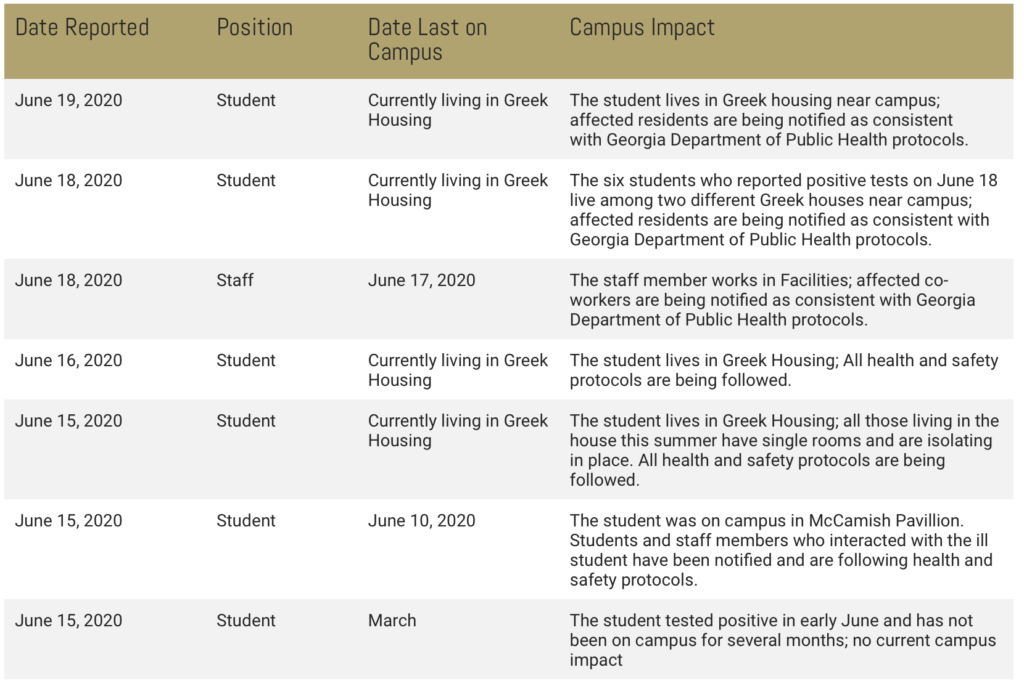
In my opinion, the fact that we are preparing for mass amounts of people to be sick is insane. Daily symptom reporting checks rely on the honesty of college students. With regular semester academic pressures, many college students adopt a work hard approach to learning. It is very possible that anxiety and tension be prominent during the semester, with many students going in and out of quarantine and potentially not being honest on their health app checks. Think of all the times you have worked through a bad cold in college. Check out this great simulation of the potential impacts of the fall from a hypothetical student’s perspective.
Let’s now take a look from a pedagogical perspective. Faculty value student engagement, as seen from this past spring’s remote classes. With Penn State saying that none of their classes can have in-person small group discussions due to fears of viral spread, classrooms and pedagogical goals will be significantly altered. Faculty are asking for the option to teach remotely. 46% of faculty respondents at the University of North Carolina said they’d prefer remote teaching. Biology faculty at Macalester College caution against in-person instruction. The Chronicle of Higher Education has published a series of essays from people on both sides of the reopening spectrum. Many who are warning against reopening are professors of the sciences or doctors. (Coincidence?) From a staff perspective, they demand a seat at the table. “As a longtime University employee in Facilities Services, I have zero confidence in the university’s capability or willingness to do what is needed to keep workers safe from Covid-19,” one employee at the University of North Carolina said.
Academic life will be fundamentally altered. Leave of absence policies for classes due to illness (or feared illness) will need to be developed. American University has outlined clear plans to de-densify classrooms. The University of California, Los Angeles has announced that 15-20% of their courses will be in person. Harvard University has taken a similar path. The University of Texas at Austin has uploaded a list of which courses they anticipate offering online. 82% of IT departments in one survey is planning for hybrid teaching and learning to support both campus-based and online education.
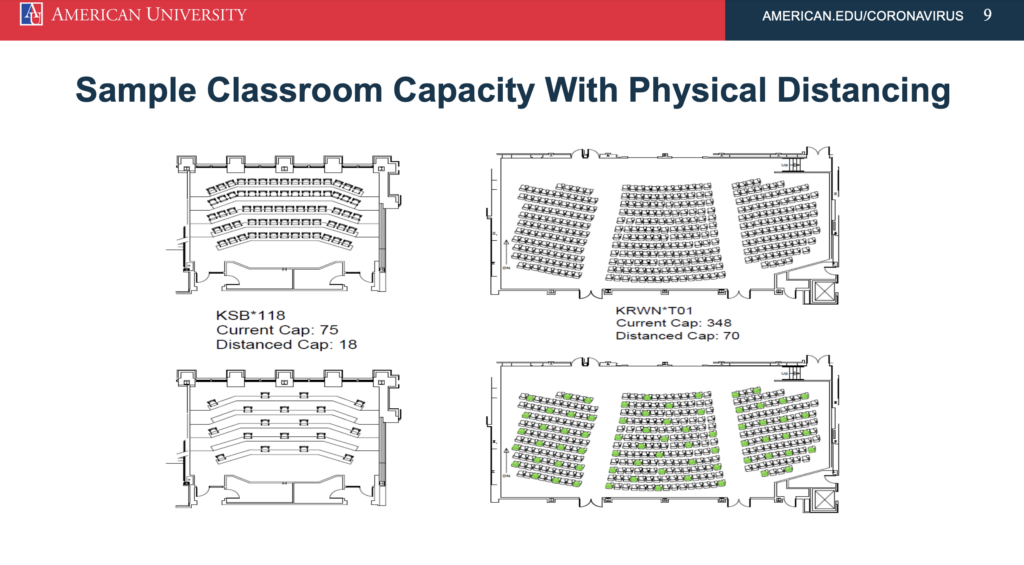
Which brings us to a key point: One of the patterns I think we are now seeing is colleges announcing fall reopening plans in order to attract deposits and save themselves financially, while charging seemingly full tuition for a semester that will include a large portion of online classes. Many of these residential-remote models (or an online-first campus) are turning out to be this way. One key statistic will be to see what percentage of classes colleges anticipate being in-person. I’ve seen as much as 80-100% and as low as 10% or those that are absolutely essential (labs, etc.). Follow the money.
Let’s discuss residential life. While one may be able to reduce infection risk in academic settings, it is going to be interesting to see plans for residential life. Sure, you can de-densify rooms, but students will still congregate socially. Students at the Rhode Island School of Design, as my colleague Olivia George at Brown reports, will need to quarantine for 14 days upon arrival. Fewer roommates will be possible. The University of Virginia is assigning sinks to students (I remain skeptical of this method’s efficacy). The University of South Florida will not offer refunds if on-campus housing needs to close early this year. Georgetown University is considering scenarios ranging from all virtual to distributing their students around D.C. Suffolk University is placing first-years in single occupancy dorms and returning students in local hotels in Boston. MIT intends on not bringing all students back. For colleges where students can cross-register classes at other nearby colleges, many could see that option not available, as my colleagues Maria Heeter, Meghan Bobrowsky and Siena Swift at the Claremont Colleges report.
Traveling off campus will need to be confined to a geographic area if these restrictions are placed — local town? City? State? It is incredibly hard in the U.S. for colleges to physically confine students to campus and enforce it. Trust me, I’ve seen barricades in China.
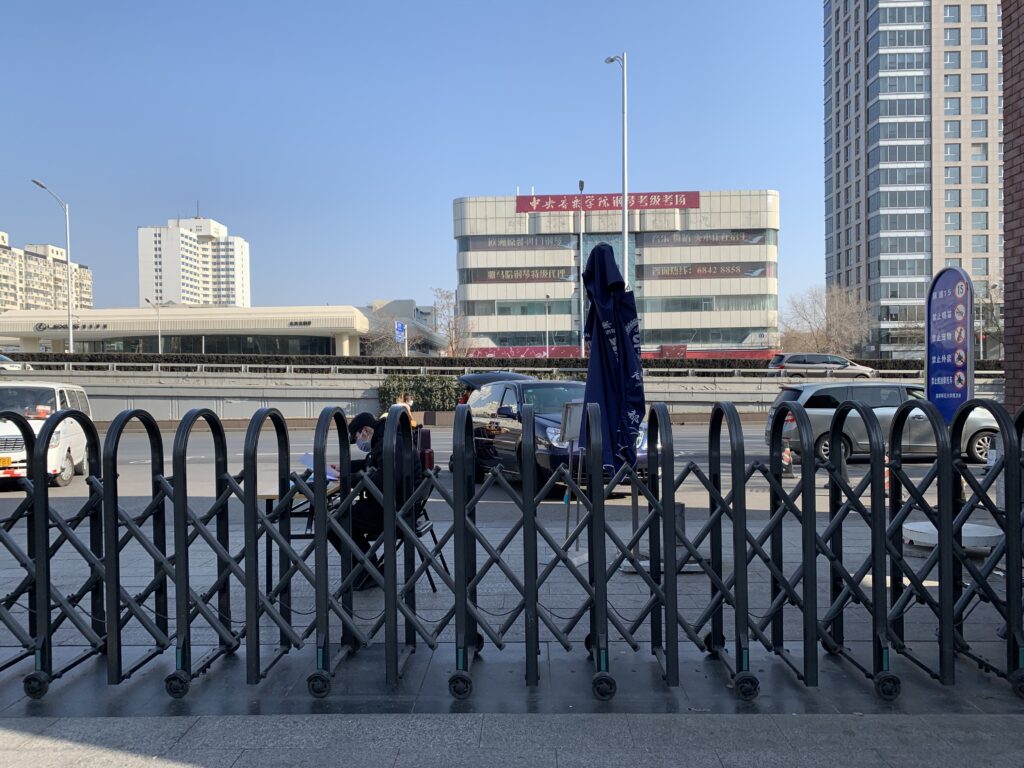
Communication is key for college administrators. Regardless of your opinions on MIT’s decision, I wanted to commend them on their clear communication and explanation. Detailing the reasons for colleges’ decisions will be critical for community trust. Colleges have a responsibility to ensure safety for all in the community, otherwise the costs from hospitals and potential lawsuits could be reasonably high. A college’s reputation could be affected from a major outbreak, or they could receive sharp criticism from opening too fast, in the case of Purdue University’s plans. One key question that Andy Thomason from the Chronicle raises: “How bad, in terms of cases/hospitalizations, will it have to get for you to send all students home for another online semester?” In the case of Northeastern University, there is no threshold. Students at Duke University are skeptical of their college’s plans. “I find it a little hard to trust that Duke students will go an entire semester without going to a party… knowing how lively our campus culture is,” one student said. Student input through surveys is critical to colleges making decisions. Without returning to campus, there exists a great disparity in students’ internet access. Having a remote fall could also have consequential effects on voting: a new study found that the adoption of on-campus early voting not only made it more likely that young registrants exposed to a policy turned out to vote, but that it also shifted the timing of when these young voters cast a ballot. These are many of the factors at stake for fall reopenings, big and small.
We’re going to take a brief look at the admissions world, with regards to a new survey of the high school class of 2021. For successful recruiting, colleges must be prepared for individualized virtual events and refocus their digital marketing, as it is likely that many college campuses will be closed to outside admissions visitors for the fall.
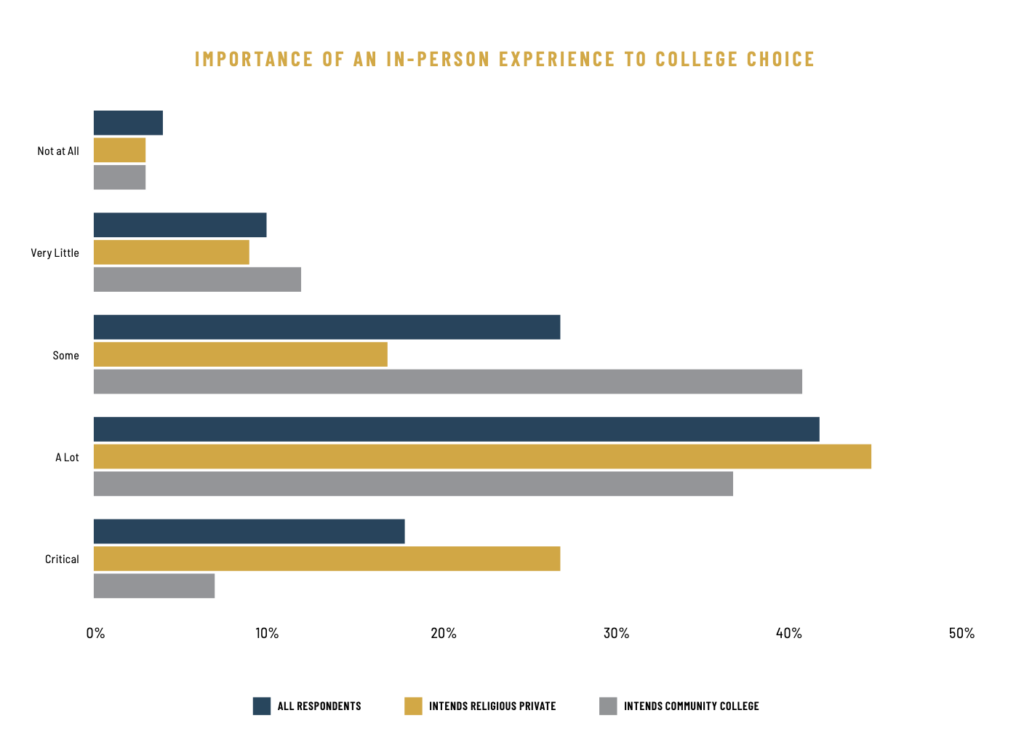
Let’s talk about athletics. Since last week, more schools have been added to our running map of coronavirus cases in college athletes, with Clemson University racking up a whopping 26 confirmed cases. Two questions I ask myself as we begin to infer how these results could affect the return of the student body are:
- Are these athletes coming from areas with high infection prevalence?
- Are the athletes active in their communities before their return to campus, presenting possible scenarios for viral exposure?
Risk waivers, HIPAA protections (some schools claim they cannot release the numbers of positive tests), the requirement of health officials to ensure compliance and divisions of athletic conferences will all be part of the game this fall.
Study abroad and international travel
I still don’t think most study abroad programs will be running for the fall. This week, Boston College and Kansas State University announced fall program suspensions. There was an insightful survey released this week that polled students on their experiences returning home from abroad programs this spring. Students would have liked to have received more mental health, financial and accommodation support. Many do want to resume leisure travel again, though not study abroad.
I would encourage those who are involved in international student advising to consider providing more support to their international students, as they could face new challenges in the fall (including issues with Zoom). My colleagues Juliet Isselbacher and Amanda Su, who have never stopped diligently covering the happenings at Harvard, gathered many opinions from international students, while eager to return for the fall, see great difficulties ahead. One interesting phenomenon we have seen is in the case of Duke University, who has a campus in Kunshan, China, offering courses for Chinese students stuck in China at their China campus.
Finally, the Trump administration moving to restrict international students is a terrible idea. Let’s just leave it at that.
The Good Stuff
Let’s roll the clips of the good stuff. In my usual tradition, I feature my favorite stories from the week. Let’s go with the top 11.
- CNN reporter Sara Sidner’s powerful op-ed on covering the Ferguson and Floyd protests.
- An insider’s look into Governor Andrew Cuomo’s briefings.
- CNN anchor Wolf Blitzer’s tribute to Dr. Anthony Fauci and all those who are working so hard to save lives during this coronavirus pandemic.
- Taking a road trip from Florida to Oregon during the pandemic.
- Middlebury Union High School students in Vermont sing “Rivers and Roads” for their graduation.
- According to experts at Cornell, murder hornets are a bigger threat to bees than to humans. (Remember those?)
- The Eiffel Tower in Paris has reopened, but you’re going to have to take the stairs.
- The New York Times reports on how giant ships are built, creating a ship in punctuation marks.
- The transcript of President Trump’s wild interview with The Wall Street Journal, and my accompanying analysis. My graph shows the the top 100 words from the interview. Key ones that stand out to me: I (382 mentions), people (53), good (44), China (35), Bolton (22) and tariffs (18).
- Face masks designed in the style of Democratic governors.
- Human rights campaigner and 2014 Nobel Peace Prize winner Malala Yousafzai has expressed her “joy and gratitude” after finishing her final exams at Oxford University.
Conclusion
There you have it. Over 16 pages (new record!) of source links distilled into this week’s coronavirus update. This week, I chose to feature more objective facts from recent reports, rather than much of my own analysis and interpretation. Like many, I am skeptical of many colleges’ plans for fall reopening, though I believe that it can be done with extremely meticulously calculated risk. It all depends on the news cycle, but I’m hoping to make these a little shorter in the future (for my sanity and yours). We have seen that our actions can save lives. In a country where “anti-science bias” is coming from the top, we must continue to follow the advice of doctors and medical experts. I’ll continue to provide coverage as long as is necessary.
I’d like to thank all the student journalists with whom I have the pleasure of working. In the next weeks and months ahead, they will become ever more important in chronicling their colleges’ decisions for the fall and beyond. Support their work by reading it.
And remember:
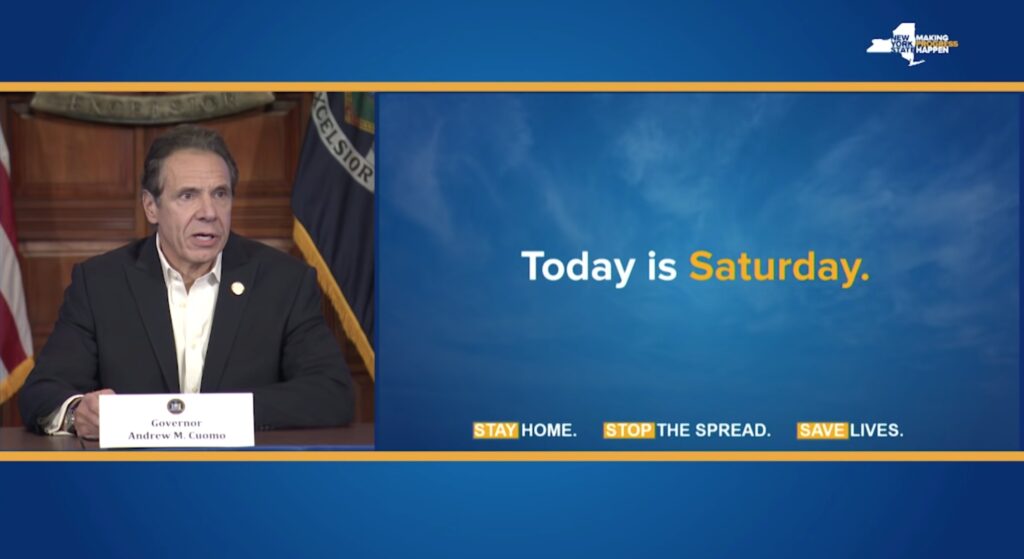
My best to all for good health.
Like what you see? Don’t like what you see? Want to see more of something? Want to see less of something? Let me know in the comments. And don’t forget to subscribe to the weekly newsletter!
For more instant updates, follow me on Twitter @bhrenton.

